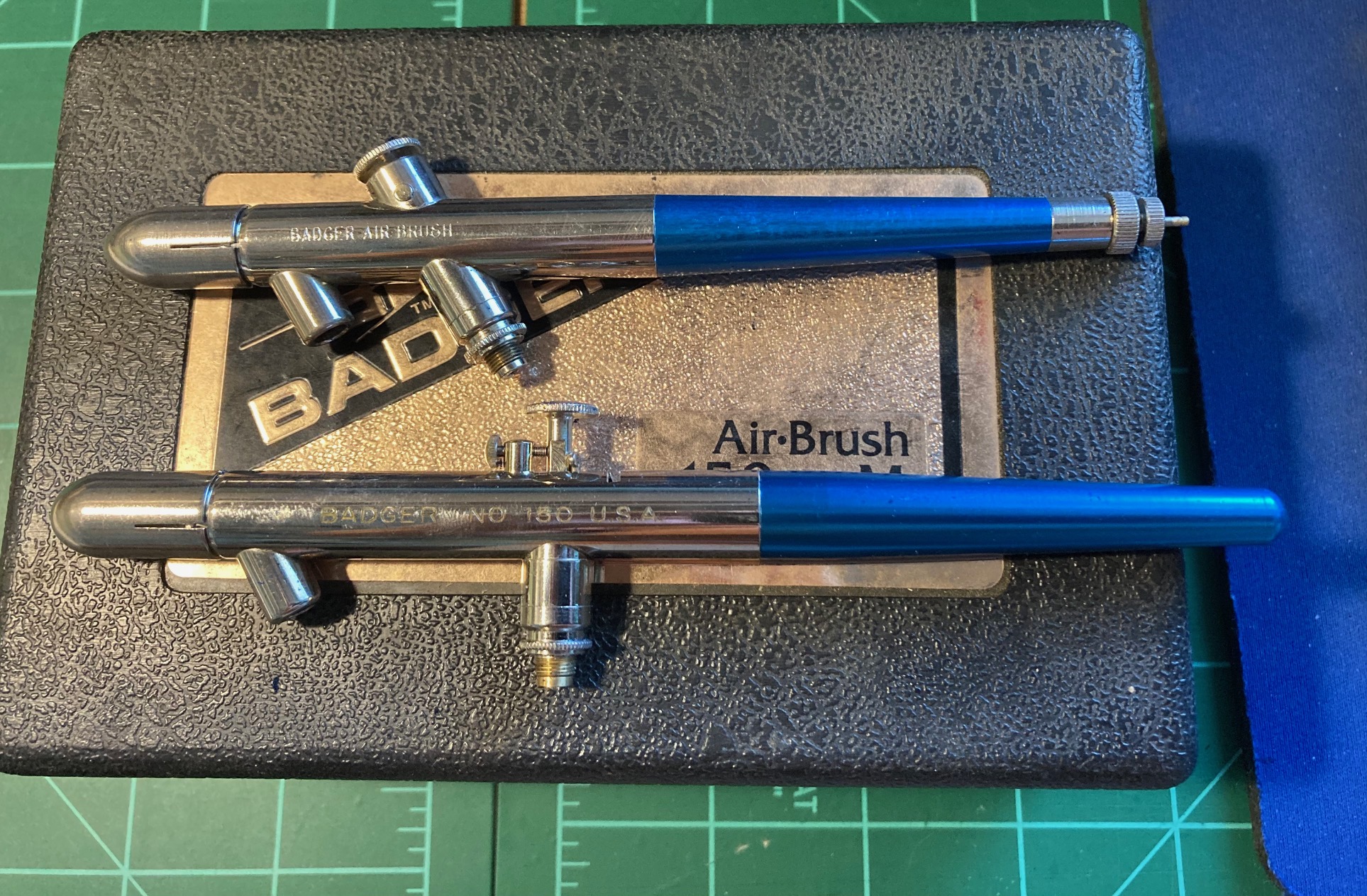A buddies stepdad died. He was into 'live steam' and made steam powered trains and boats. Had a bunch of hobby related stuff and my buddy gave me a couple paint sprayers. I got a fullsize automotive sprayer and this little airbrush.
The instruction manual is pretty well rotten and can only make out the back page and it is a 'Badger'
View attachment 450159dated march 1976. The sprayer looks dirty but not rusted or anything, I think I can clean it up and make use of it. I have a big shop air compressor but I figure that pressure is too high for this so I gotta turn the regulator down.... what pressure do these run at? How should I clean it? What paint can I run through it?
Go to Badger's web page, the manual will be a downloadable .pdf. Replacement needles, tips and seals are available if it needs to be restored. I don't know what model you have, but I can tell you it is NOT a 150. Max pressure is 50psi, but you will find anything above 30psi for a full open round pattern is pretty high.
In the manual (or another article) it will have beginners instructions. Plan on wasting some paint, thinner and time to get the technique of an air brush down.
You have a single action air brush. Meaning you press the trigger down for air and fluid flow. This is where practice, practice, practice, and more practice will come in to get the effect of the air brush you want to actually happen. When working properly, depending upon the size of the needle and head, you should be able to reach a 2-3 inch diameter down to a 1/16" pencil line.
You will also want to fool around with different rates of reduction of our color as this also plays into the effects you will get. Using an air brush to do detail work takes a long time. But if you just plan on using it like a tiny spray gun the learning curve should be quite short.
The instructions will have you doing dots, lines and other practice techniques. If you find it fun, you will succeed. If you find it frustrating, you don't have the patients for it.
Another thing to consider, is in the 70's Lacquer based mediums were the norm. I wouldn't hurt to replace the nylon seals. If the departed gentleman was into train modeling, most likely he started out with lacquer based products way back when, and after the FDA made changes he probably switched over to water based products. For a short time, enamels filled the gap, but highly unlikely he used them as train modeling uses flat colors.
Good Luck, and Have Fun!
 dated march 1976. The sprayer looks dirty but not rusted or anything, I think I can clean it up and make use of it. I have a big shop air compressor but I figure that pressure is too high for this so I gotta turn the regulator down.... what pressure do these run at? How should I clean it? What paint can I run through it?
dated march 1976. The sprayer looks dirty but not rusted or anything, I think I can clean it up and make use of it. I have a big shop air compressor but I figure that pressure is too high for this so I gotta turn the regulator down.... what pressure do these run at? How should I clean it? What paint can I run through it? dated march 1976. The sprayer looks dirty but not rusted or anything, I think I can clean it up and make use of it. I have a big shop air compressor but I figure that pressure is too high for this so I gotta turn the regulator down.... what pressure do these run at? How should I clean it? What paint can I run through it?
dated march 1976. The sprayer looks dirty but not rusted or anything, I think I can clean it up and make use of it. I have a big shop air compressor but I figure that pressure is too high for this so I gotta turn the regulator down.... what pressure do these run at? How should I clean it? What paint can I run through it?






 The wife drinks 1%.. looks like water.
The wife drinks 1%.. looks like water.
